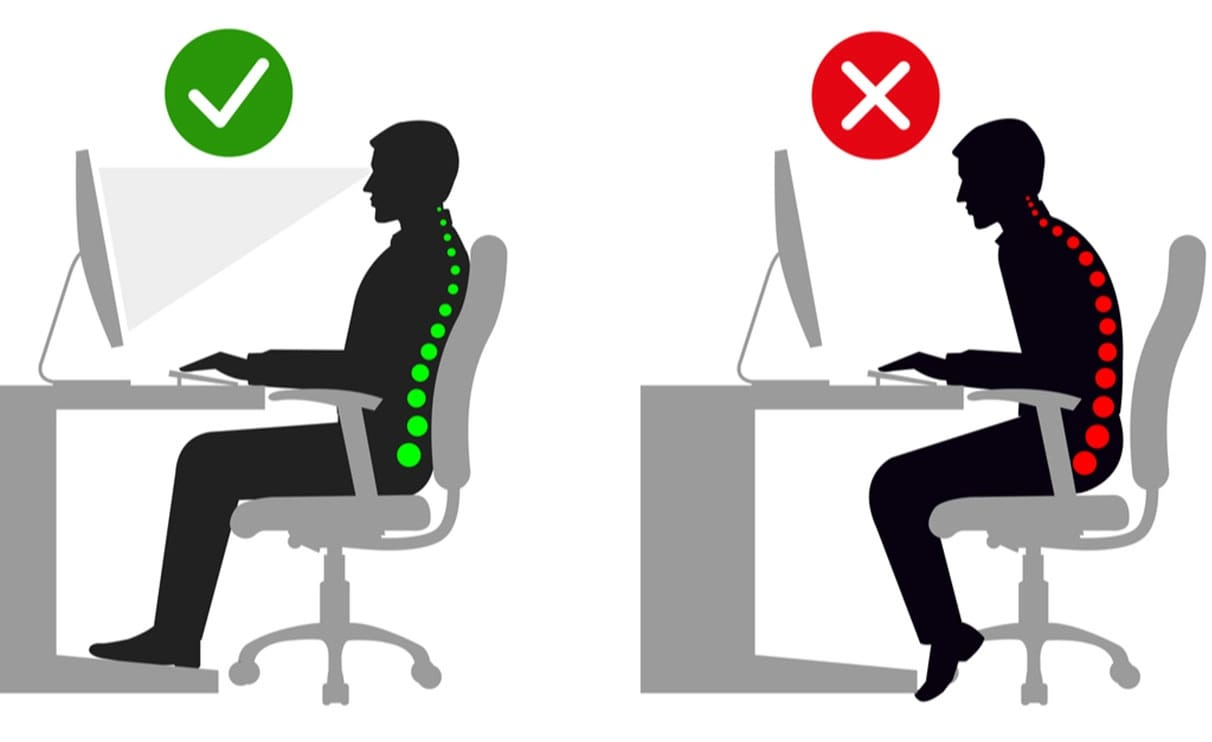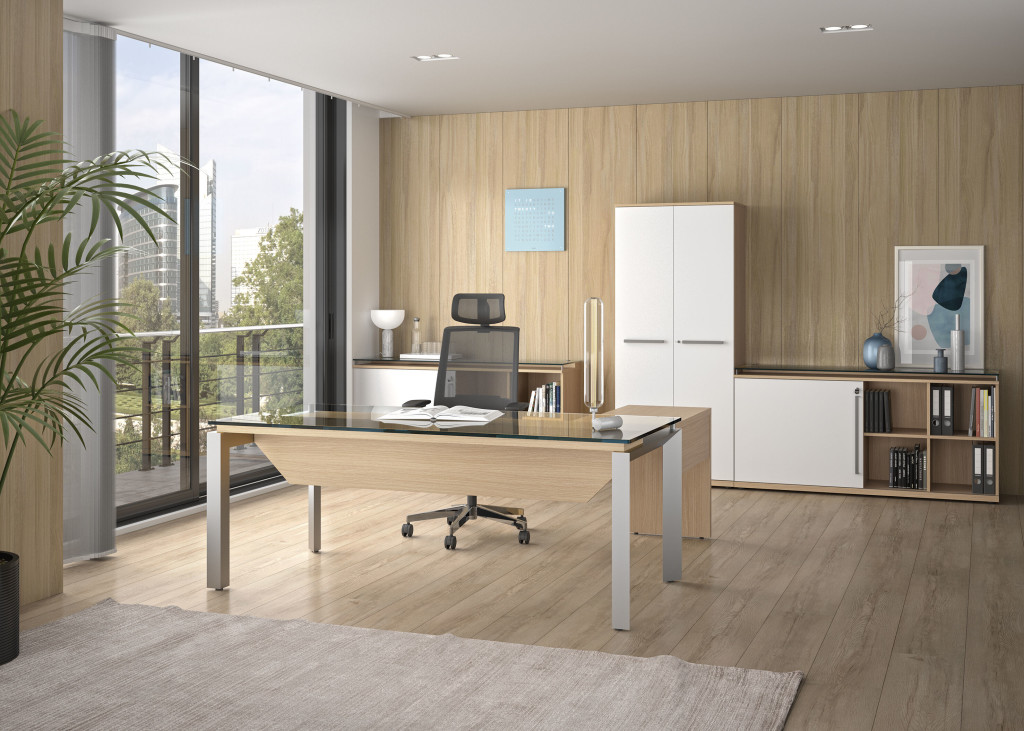Ergonomics in the office: what solutions to adopt ?

Ergonomics in the office : what solutions to adopt ?
In many professions, some people have to sit at their desk for many hours. This is why it is essential not to neglect the design of the work space. Moreover, the creation of an ergonomic environment ensures certain advantages related to health, but also to productivity. Discover today some solutions that will allow you to considerably improve the ergonomics of your office.
How to adopt a good working posture?
Days spent sitting at the office can have a significant impact on your health and lead to various pains and musculoskeletal disorders. So, above all, it is essential to adopt the best possible position to limit these risks.
To check if you are correctly seated and to judge the ergonomics of your desk, think of the 90° rule: your knees should form a 90° angle, as should your elbows and your back with your lower body.
Start by sitting at the back of your chair with your feet flat on the floor:
Your thighs and back should be at a 90° angle;
If necessary, adjust the seat height so that your knees also form a 90° angle;
Then adjust the armrests if your chair has them;
Finally, when you put your forearms on the desk, your elbows should also be at a 90° angle.
Your arms should rest easily on the tabletop, your shoulders should be relaxed, neither too low nor too high. When you are sitting at your workstation, your posture should be comfortable and not require any special effort. However, even with good posture, it is still important to move regularly throughout the day.
Alternate positions as much as possible
Today, it is no longer a matter of course that a sedentary lifestyle at work should be avoided as much as possible. Indeed, a static posture behind a desk can lead to numerous backaches and neck pains. According to some studies, prolonged sitting is even the cause of certain cardiovascular pathologies. Ideally, imagine a workstation that allows you to alternate standing and sitting postures to limit these risks.
To vary your positions according to your different tasks, you can design two distinct spaces or opt for a height-adjustable desk. There is even furniture whose height can be modified with an electric assistance and which can be easily adjusted to your needs throughout the day. Discover also the various models of stations that offer you an extremely easy transition from sitting to standing. And if you can't adjust your workstation, remember to stand up regularly, stretch and take a few steps at the slightest discomfort.
How to adjust your desk and chair for a correct sitting posture?
The ergonomics of your office depends on an adapted work space, which allows you to adopt a good posture and to avoid pain. More and more ergonomic desks offer a height adjustment to fit the physical characteristics of each user. Not everyone is 1.75m tall! And a desk that is too low or too high can quickly have repercussions on the health of your back. If you don't have an adjustable workstation, you can adjust the height of your seat to improve your posture.
With an ergonomic chair, you can sit comfortably at the back of the seat because the backrest fits your back perfectly. And its height adjustment allows you to adopt a good posture by keeping your feet flat on the ground. When choosing your office chair, look for swivel models with casters and those with headrests and armrests. With the latter, you will be able to move more easily, and you will also be able to relax your arms and shoulders more easily.
Which elements to choose for your workstation?

To improve your posture and reduce the risk of pain, you can also opt for additional ergonomic accessories such as a footrest or a back support to add to your office chair. Don't forget to install your screen at a minimum distance of 60 cm (to be adapted according to its size) and to adjust its light intensity so as not to tire your eyes unnecessarily. You must place it so that your eyes arrive very slightly below the top of the screen and your position must not cause any discomfort or pain.
Depending on your needs, you may also want to consider other items, such as an ergonomic mouse, a gel mat with a wrist rest, a stand to raise your screens, a document holder with an ergonomic writing area, or a raised wastebasket. Finally, don't neglect the light! You don't want to be dazzled, but you want to have soft, appropriate lighting to perform your tasks. To achieve this, you can change the position of your workstation according to the location of the windows in the room or add desk lamps.
This list of solutions is far from exhaustive. However, proper equipment and posture remain the key to good office ergonomics. Discover all our office furniture without delay. View our different models in our virtual showroom and compose your own ergonomic workspace.
Comments : 0